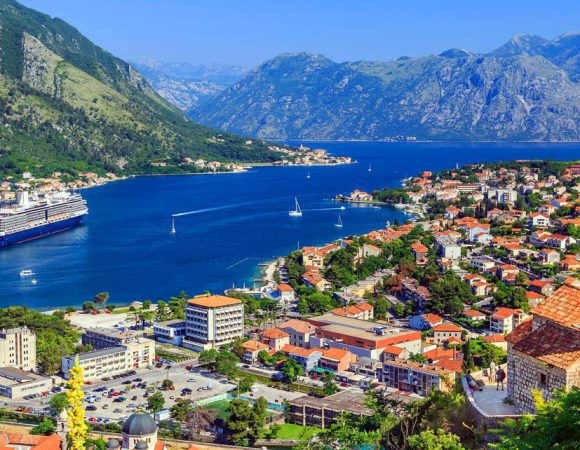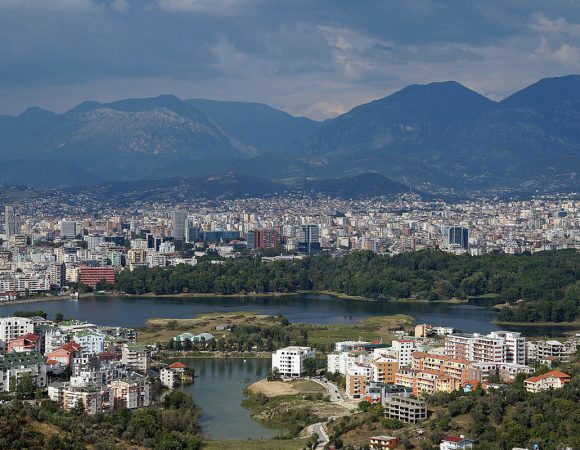
Turkiye
The official name of Turkey is the Republic of Turkey, most of its territory is in Anatolia, and a small part is in Thrace, which is an extension of the Balkans . Surrounded by sea on three sides, Turkey consists of two peninsulas separated by the Bosporus and the Dardanelles . These straits separate Anatolia from Thrace, that is, Asia from Europe. Turkey, with its long shores parallel to the Mediterranean and its extension, the Aegean Sea, is a favorite destination for foreign tourists.
Turkey has a coastline on four seas, namely the Aegean Sea, the Mediterranean Sea, the Black Sea and the Marmara Sea. There are countless natural beauties in the country, which has different geographical and climatic characteristics. Anatolian history, shaped under the influence of different cultures, has made Turkey extremely rich in terms of cultural heritage.
If you want to explore the must-see places of this beautiful country, you should definitely read our article on places to visit in Turkey .
Capital, Cities and Regions of Turkey
The capital city of Turkey is the province of Ankara, located in the Central Anatolia region. Turkey is divided into seven geographical regions. These distinctions are based on geographical and climatic features. Its largest city, Istanbul , is located in the Marmara Region. Aegean Region and Mediterranean Region, on the other hand, cover the western and southern coastlines, respectively. The Black Sea region stretches along the northern line of the country. Central Anatolia Region is located in the middle of Anatolia, Eastern Anatolia Region with Lake Van and Mount Ararat in the east, and Southeastern Anatolia Region where Mardin is located in the southeast.
There are great differences and diversity between regions in terms of economic development, ethnic structure and culture. Its most important cities are Istanbul, Ankara, Izmir, Adana, Muğla, Antalya, Trabzon, Gaziantep, Bursa, Erzurum, Mardin, Eskişehir and Diyarbakır.
Where is Turkey?
Turkey borders Bulgaria in the northwest, Greece in the west , Georgia in the northeast , Nakhchivan in the east , which is bound to Armenia , Iran and Azerbaijan , and Iraq and Syria in the southeast . It is surrounded by the Mediterranean Sea to the south, the Aegean Sea to the west, and the Black Sea to the north.
Turkish Culture
There are great differences between communities and classes in Turkey , depending on ethnicity and income. These differences cause great differences between the regions and neighborhoods where these segments live. There are great differences between the social life in conservative cities of Anatolia and the social life in the western regions of Turkey and in Istanbul, its cultural capital .
Turkish Cuisine
Turkish cuisine, which was formed as a result of the interaction of different cultures during the Ottoman Empire, one of the most cosmopolitan empires in human history, is one of the richest cuisines in the world.
Turkish cuisine. It has many common dishes and features with Greek, Arabic and Armenian cuisine. Your eating habits differ in parts of the country. While vegetable dishes with olive oil predominate in the western regions , grilled meat dishes stand out in the east . The most basic type of food of the Black Sea Region is anchovy fish , where everything from dessert to rice is made and which is abundant in the Black Sea region . Different fish are grown in the Aegean, Mediterranean and Marmara seas, and seafood has an important place in the cuisine of the coastal areas.
The inner regions of Southern and Western Anatolia, the inner parts of the Black Sea and the Central Anatolia Region are the places where small cattle breeding is common. Meals made from sheep and goat meat are common. While veal is widely used in local dishes in Eastern Anatolia, where mostly cattle are raised, poultry and game meats such as goose, quail, partridge, rabbit also have a place in Turkish cuisine.
Desserts are also one of the rich parts of Turkish cuisine. Especially Gaziantep baklava is world famous. Desserts made with milk and boiled fruits are also very delicious. In Ottoman cuisine, fruits are also used in meat dishes. It is also possible to find options from world cuisine in big cities such as Istanbul, Ankara and Izmir.
Souvenirs to Buy from Turkey
The most popular gift you can take from Turkey to your loved ones is unquestionably Turkish delight . Delights produced with the aroma of various fruits and nut from mint, rose, quince, gum, are world famous. Apart from this, hookah, which is an Ottoman tradition, and Turkish coffee sets, which have their own cooking methods and devices, are also popular gifts.
Turkey’s Festivals
National and religious holidays are celebrated enthusiastically in Turkey. Apart from this, almost every province has numerous local festivals. Apart from these festivals for the promotion of local agricultural products and flavors, there are film festivals held once a year in Istanbul, Adana and Antalya. While the Antalya Golden Orange and Adana Golden Boll festivals are very prestigious for the domestic film industry, the Istanbul Film Festival organized by the Istanbul Foundation for Culture and Arts (IKSV), Turkey’s most important cultural investor and actor, presents the internationally prestigious Golden Tulip award.
Again, the Istanbul Biennial and the Istanbul Design Biennial , which are organized biennially and consecutively by İKSV, are the country’s cultural events with international prestige. Two international contemporary art fairs are held in Istanbul in October and November every year , and the Istanbul Music Festival , which is also held every year in June by İKSV, holds the title of the most rooted art event in Turkey’s history.
Holidays / Holidays / Special Days in Turkey
Since religious holidays are calculated according to the lunar calendar, their dates change every year.
· New Year (January 1)
· Feast of Sacrifice
· Candy Feast
Labor Day (May 1)
Commemoration of Atatürk, Youth and Sports Day (May 19)
· National Sovereignty and Children’s Day (23 April)
Victory Day (30 August)
Republic Day (29 October)
Climate and Weather in Turkey
Three climate types are dominant in different regions in Turkey. Mediterranean climate is seen in the western and southern coasts , Black Sea climate in the Black Sea coasts , continental climate in the interior and mountainous eastern regions . The Black Sea climate, which has characteristics similar to the oceanic climate, is dominant on the Black Sea coasts. In this climate, summers are warm and rainy, and winters are cold and snowy.
Continental climate is dominant in the inner parts of the Black Sea Region, the Central Anatolia Region, the Eastern Anatolia Region and the Central West Anatolia region, which expresses the inner part of the Aegean Region. In this climate, summers are hot and dry, and winters are cold and snowy. Precipitation and temperature rates vary according to altitude. In the Mediterranean climate, which dominates the Mediterranean, Aegean coasts and certain parts of Southeastern Anatolia, the summers are very hot and dry, and the winters are warm and rainy. The climate in the northern and eastern parts of the Southeastern Anatolia region is continental climate.
A Brief History of Turkey
The first settlements on the lands on which Turkey is located were started in the Paleolithic Age by societies such as the Aeolians , Doric and Ionians, Thracians and Persians . Then III. With the rule of Alexandros, the Hellenistic period followed, then the Roman and Byzantine periods. As a result of the settlement of the Seljuks in Anatolia in the 11th century, the Turkification movement began on the lands, and with the victory after the Battle of Manzikert in 1071, the Byzantine supremacy in Anatolia lost power in favor of the Turks.
Founded after the fall of the Seljuks, the Anatolian Seljuks ruled the region until the Mongol invasion in 1243 . After the invasion, many small Turkish principalities emerged in Anatolia. The Ottomans , one of these principalities , became the rulers of Anatolia from the end of the 13th century. In addition, they gained great power in Eurasia and Africa, establishing a great empire with lands in Southeast Europe, West Asia and North Africa. After the 17th century, the Ottoman Empire went into decline. The Republic of Turkey was established in 1923 by Mustafa Kemal Atatürk as a result of the War of Independence against the occupying forces, after the empire was defeated and destroyed in World War I.
Turkey’s Economy
Turkey ranks 17th in terms of gross domestic product. It is a founding member of the OECD and G-20 large economies communities. Turkey has a strong automotive industry. According to 2013 data, the country ranks 17th in the list of countries producing the most automobiles. Turkey is in competition with Malta, Norway, the United Kingdom and the Marshall Islands, which are also major markets in shipbuilding . Tuzla, Yalova and Izmit are the main centers of the shipbuilding industry.
Other important items of the Turkish economy are banking, construction, household appliances, electronics, textiles, oil refining, petrochemical products, food, mining, iron-steel and machinery industry . A quarter of the population works in the agricultural sector. Only 30 percent of the working population is made up of women, the lowest rate among OECD member countries. The most well-known brands of Turkey on the international platform are Beko and Turkish Airlines.
Languages Spoken in Turkey
The official language of Turkey is Turkish. The entire population speaks Turkish. Different languages such as Laz and Kurdish are also spoken in the country according to the regions. Georgian, Armenian and Circassian population living in the country also speaks these languages. The most common foreign language in the country is English.






